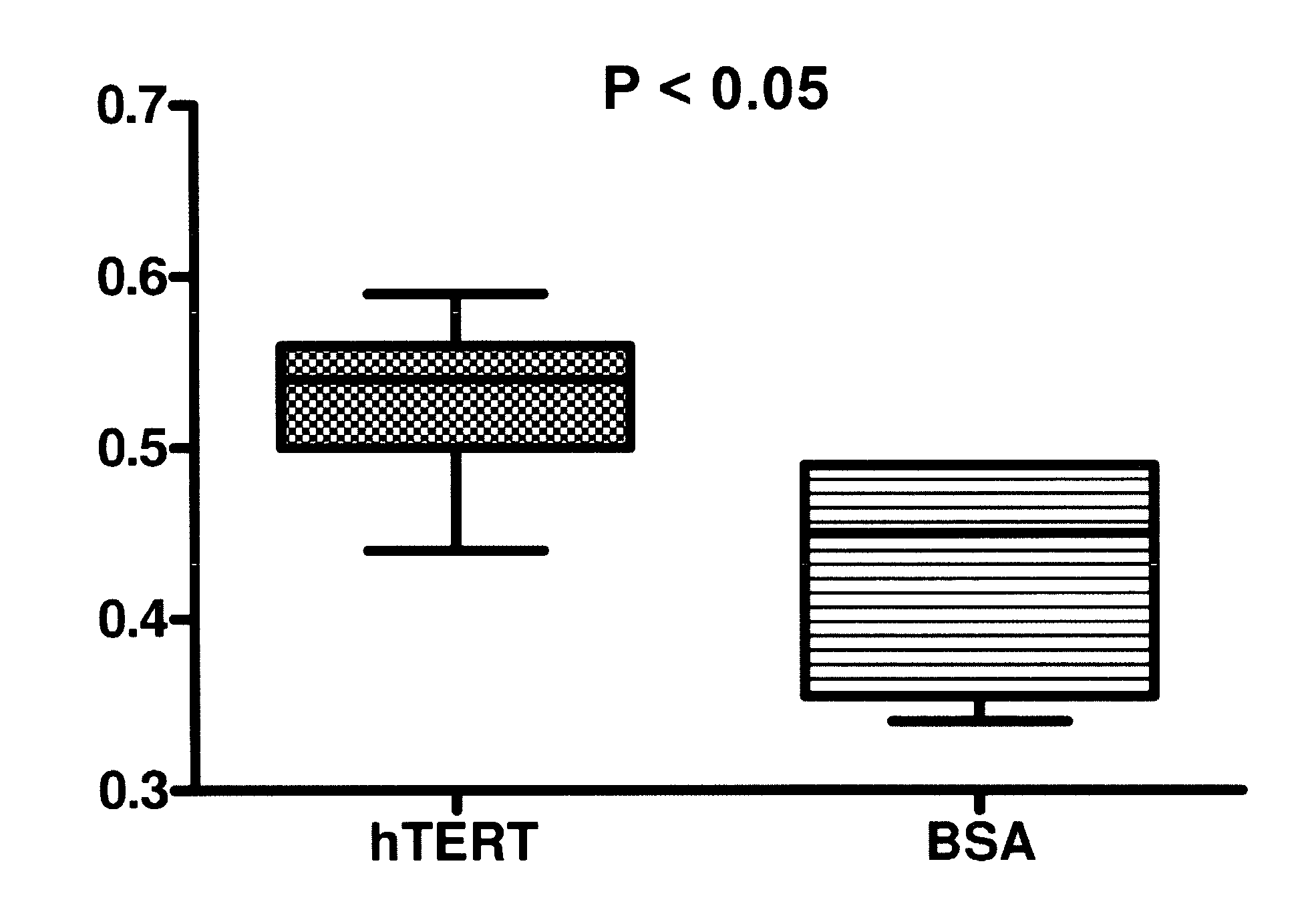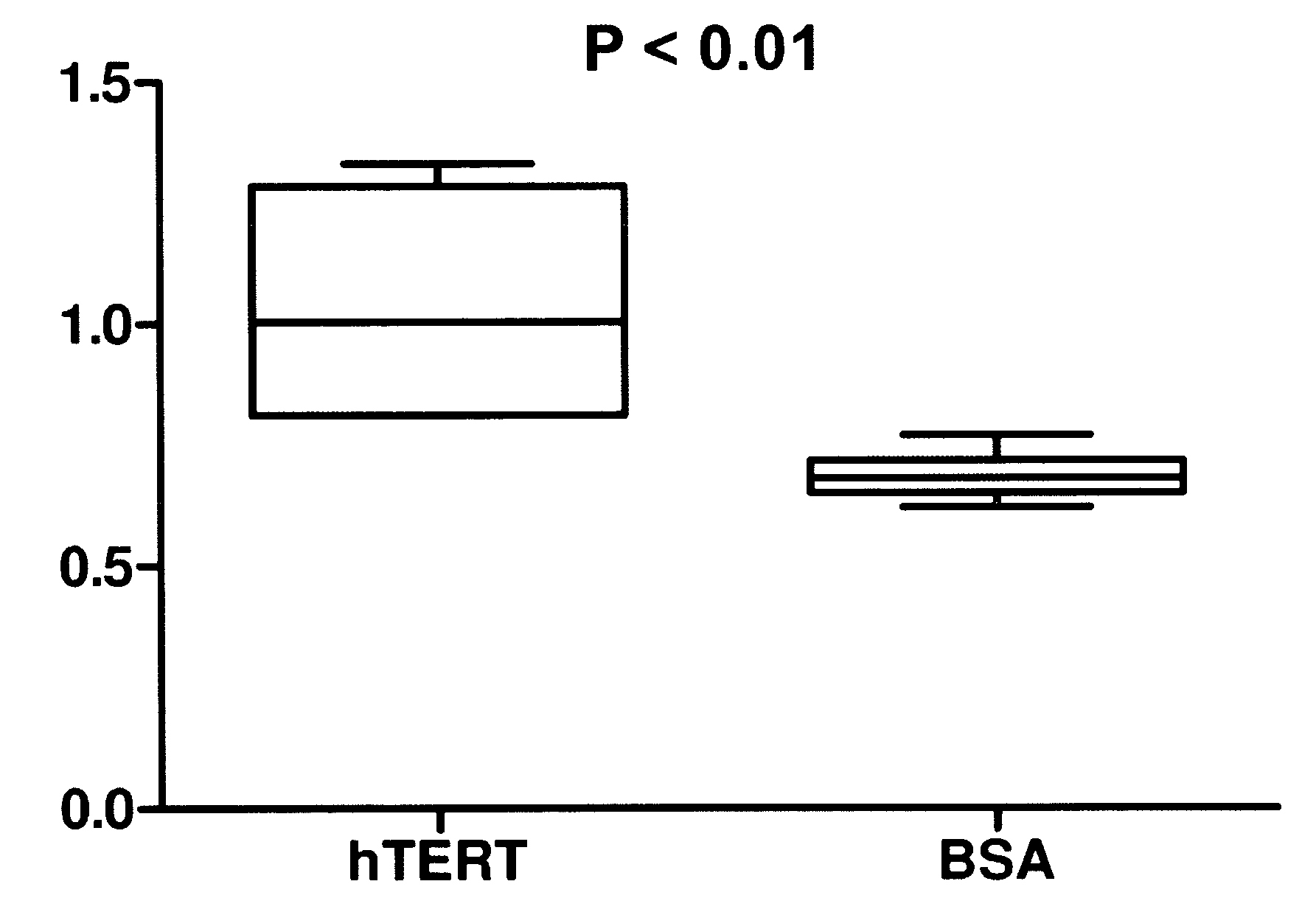Telomerase delivery by biodegradable Nanoparticle
a biodegradable nanoparticle and telomerase technology, applied in the direction of capsule delivery, microcapsules, peptide/protein ingredients, etc., to achieve the effect of facilitating the transduction process, facilitating sustained release of telomerase, and changing the nature or sustainability of protein releas
- Summary
- Abstract
- Description
- Claims
- Application Information
AI Technical Summary
Benefits of technology
Problems solved by technology
Method used
Image
Examples
example 1
[0059]In Example 1, both active telomerase and active hTert were delivered to fibroblast cells in a biodegradable nanoparticle. Recombinant telomerase and recombinant hTert were obtained from Advanced Product Enterprises LLC (Frederick, Md., USA). Both proteins were in solution containing 10% glycerol in 1× CHAPS buffer and total protein concentrations were greater than 10 mg / ml. The use of “cryoprotectant” agent like glycerol is imperative to preserve the activity of the enzyme so that it survives a freeze thaw cycle or can otherwise be stored. Quantitative telomerase detection Kit from US Biomax, Inc (Rockville, Md., USA) was used to measure telomerase activities of recombinant active and inactive hTert. Recombinant telomerase and hTert were diluted to 10, 100 and 400 folds, 1 μl each diluted and 1 μl recombinant protein without dilution were included in the telomerase activity detection assay. Significant telomerase activity was detected for active telomerase. In other literature...
PUM
| Property | Measurement | Unit |
|---|---|---|
| size | aaaaa | aaaaa |
| temperature | aaaaa | aaaaa |
| temperature | aaaaa | aaaaa |
Abstract
Description
Claims
Application Information
 Login to View More
Login to View More - R&D
- Intellectual Property
- Life Sciences
- Materials
- Tech Scout
- Unparalleled Data Quality
- Higher Quality Content
- 60% Fewer Hallucinations
Browse by: Latest US Patents, China's latest patents, Technical Efficacy Thesaurus, Application Domain, Technology Topic, Popular Technical Reports.
© 2025 PatSnap. All rights reserved.Legal|Privacy policy|Modern Slavery Act Transparency Statement|Sitemap|About US| Contact US: help@patsnap.com



